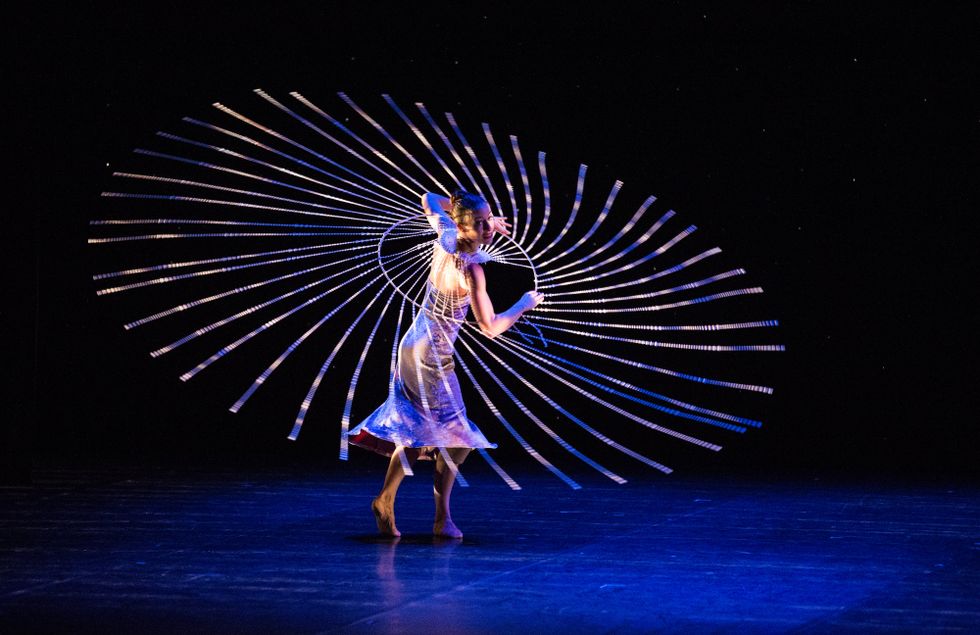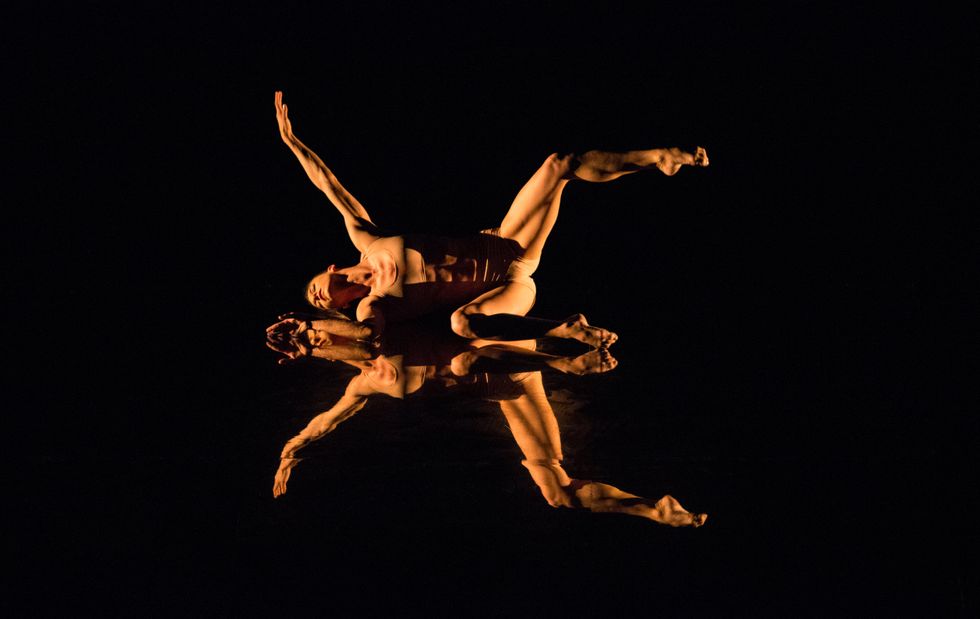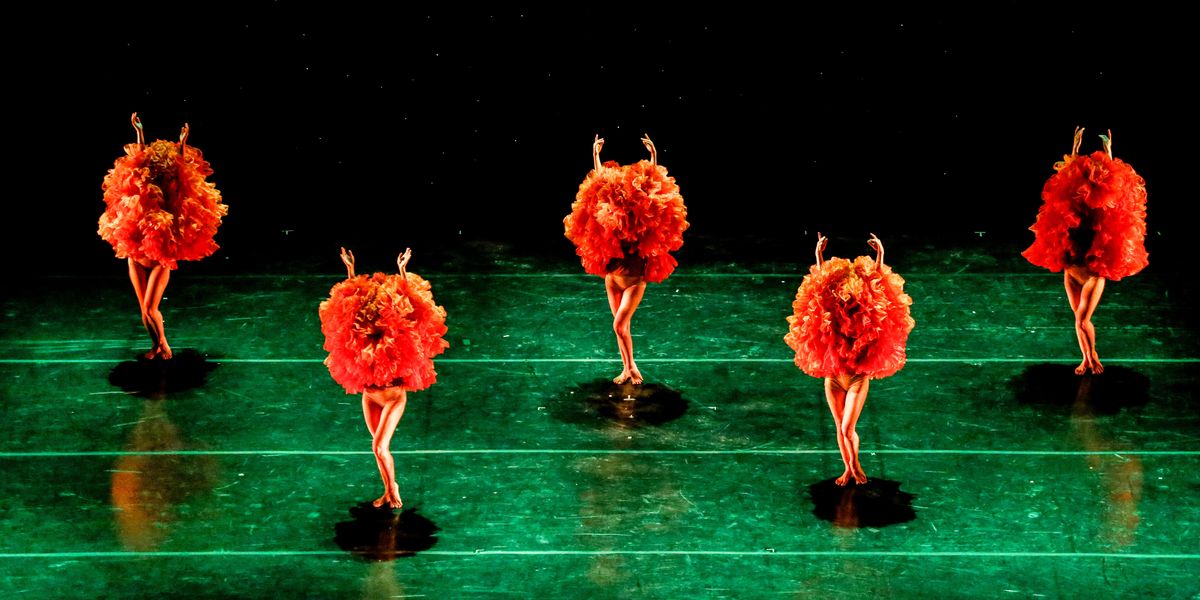MOMIX Artistic Director Moses Pendleton on Letting Costumes Lead the Choreography
For most dancers, the costumes act as the finishing touch. At MOMIX, however, the costumes are just the starting point. In order for the company of dancer-illusionists to become marigolds or stars onstage, founder and artistic director Moses Pendleton sets his movement to the costumes (designed by Phoebe Katzin), letting the sometimes-unconventional designs shape the finished piece.
So, what’s it like working on a piece like Paper Trails, where the dancers are costumed in paper that later transforms into a 12-foot dress? We spoke with Pendleton and MOMIX dance captain Sarah Nachbauer to learn all of the details of how they get their concepts from the studio to the stage—and all of the costume mishaps in between.
Your browser does not support the video tag.
Coming Up With A Concept
Because the company’s pieces are so visual, Pendleton stresses that inspiration can come from almost anywhere—such as his sunflower garden or walks through the woods in Connecticut. Ideas often evolve into something totally different from what he first imagines. “We don’t know exactly what something will turn into until we bring in an idea and play with it in the studio,” Pendleton says. “For example, Marigolds is a piece in which we saw orange tutus, that when stacked on top of one another, created this magical illusion of transforming the dancer into a flower,” he explains. “Our studio is like a creative playground; we give the dancers freedom to experiment,” he says.
A Creative Process Based On Collaboration

Amanda Hulen in “Aqua Flora.” Photo by Charles Azzopardi.
Determining the right movements to execute the desired shapes and effects means practicing in costumes from the beginning. “The more comfortable you can become with the costume, the less you’re thinking about it onstage and the more you can just let your character lead the performance,” Nachbauer says. “This takes hours of working in the costume while studying each movement you do to see how it affects the image as a whole.”
Overcoming “Disaster” Moments

Sarah Nachbauer in “Echoes of Narcissus.” Photo by Charles Azzopardi.
“Everything is trial and error,” Pendleton says. Nachbauer agrees, adding that number of costume changes alone can be challenging. “In our current show MOMIX, I personally have eight costume changes with as little as 15 seconds to change into them,” she says.
Once changed and onstage, some costumes prove to be more difficult than others. “We have a piece that is UV light dependent, which means that even though you are fully costumed, the audience can only see certain parts of the body,” Nachbauer explains. “This kind of costume has to fit perfectly and requires us to concentrate on a specific body part while using our entire body to make the illusion. In another piece, we costume ourselves in paper onto which images are projected. The difficulty there is that paper is obviously fragile and can rip at any time.” No matter how much rehearsal they have, “there are certainly times when your costume breaks or fails, but you do your best to keep going and try to have a laugh about it after the show,” she says.




